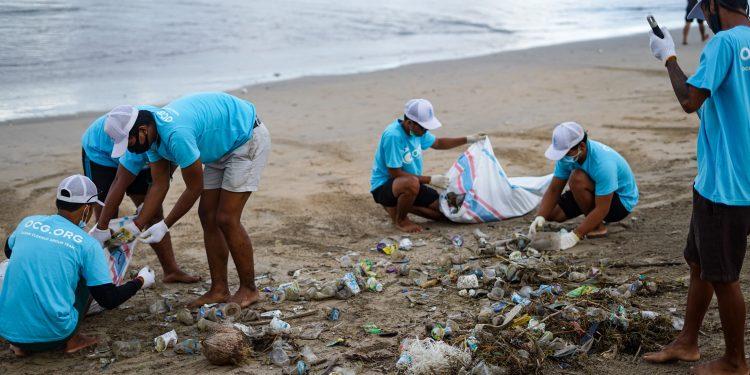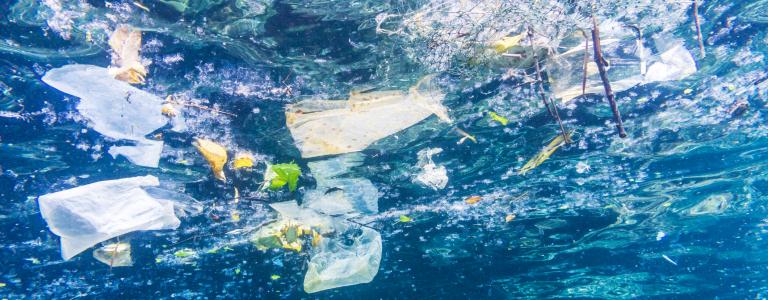Plenty of Low-Hanging Fruit for Feds to Pick in Curbing Consumption of Single-Use Plastics
Part of Canada’s action plan to ensure a green recovery from the pandemic should include incentives for small businesses, entrepreneurs, and researchers to develop innovative and sustainable solutions to reduce and prevent plastic pollution in fresh water, as well as better understand its effects.
As we continue to witness many regions of the country experiencing undulating waves of COVID-19 infections (and related shutterings and (re)openings), it seems fair to say that there are many aspects of our lives that have changed forever.
One important difference seems to be our use of plastics.
Plastics continue to be a major part of our daily lives here in Canada, as they are durable, relatively inexpensive to produce, and versatile enough for use in a diverse range of products. However, the quantity and ability to recycle these products far outstrip their usefulness.

In fact, less than 10% of plastics in Canada are recycled, contributing to over 3 million tons of plastic being thrown into landfills or into the environment each year. Over one third of plastics produced in Canada are for single-use packaging or products—such as plastic bags, take-out containers, and bottlecaps—one of the largest sources of plastics found in fresh water.
Part and parcel of the changes drafted into our daily life brought about by COVID-19, Canadians’ reliance on certain types of single-use plastics has increased.
We all remember when, at the height of the outbreak, some provincial health officials advised against using reusable bags and containers in grocery stores, with several chains banning them outright in favour of plastic bags. Although many of these restrictions are now being lifted, it may still be a while before consumers return to reusable bags.
Policymakers are also facing pressure to reverse or suspend legislation that would address plastic waste and pollution, such as Canada’s proposal to ban harmful single-use plastics by 2021.
The quantity and ability to recycle these plastics products far outstrip their usefulness.
And it doesn’t stop there; perhaps the most noticeable increase in plastic pollution brought about by COVID-19 has been in the form of single-use personal protective equipment (PPE), such as masks and gloves.
Single-use PPE is an absolutely necessary and effective public health measure, but these products are not always discarded properly and may end up as litter that can ultimately enter our waterways. How many did you see in the parking lot on your last trip to the grocery store?
Indeed, a recent study identifies plastic facemasks as a potential source of microplastic fibres in the environment. Although research is already underway to develop biodegradable or recyclable masks, even a temporary surge in plastic litter can lead to long-term impacts for freshwater environments.
So, let’s talk about the impact on the environment for a second.
In aquatic environments, organisms of all types—from algae to fish to birds—ingest or interact with plastics, causing reproductive issues, behaviour changes, starvation, physical harm and, in some cases, death.
When they break down into microplastics (< 5mm), these particles can easily travel long distances across watersheds where they can be ingested by fish, birds, and other animals—including humans. As an emerging threat to freshwater environments with potential human health implications, further scientific research on the sources, fate, and effects of microplastics is critical.
While this may sound all doom and gloom, there is actually some rather low-hanging fruit here that the federal government can easily enact to mitigate many of the potential long-term impacts of this surge in plastics use on the environment.
It is now up to us to build back better, and ensure that we balance ongoing surges in plastics usage with efforts to mitigate those impacts—all in the interests of ensuring the prosperity of Canadians and our environments for generations to come.
First, we need to move forward with our planned Canada-wide strategy on zero plastic waste, including a ban on harmful single-use plastic items by 2021. The recently announced federal ban on some single-use plastics is certainly encouraging, but there remains much to do if we are to meet the ultimate goal of zero plastic waste.
Part of Canada’s action plan to ensure a green recovery from COVID-19 should include incentives for small businesses, entrepreneurs, and researchers to develop innovative and sustainable solutions to reduce and prevent plastic pollution in fresh water, as well as better understand its effects.
Next, we need to see more education on proper disposal practices for PPE to ensure that those critical products do not end up as litter in our environment, including our freshwater resources.
And for the plastics that we can’t divert from waste streams, the federal government also needs to collaborate with industry and all levels of government to develop harmonized waste management procedures and innovative domestic recycling programs to ensure we are disposing of our plastics effectively and responsibly.
While COVID-19 has drafted in a series of lifestyle adjustments that no one could have anticipated, it is now up to us to build back better, and ensure that we balance ongoing surges in plastics usage with efforts to mitigate those impacts—all in the interests of ensuring the prosperity of Canadians and our environments for generations to come.
This article originally appeared in The Hill Times on February 1, 2021. It has been reprinted with permission.
You might also be interested in
Freshwater connectivity can transport environmental DNA through the landscape
A new study conducted at IISD-ELA found that the movement of water between freshwater bodies can transport eDNA which complicates the question of how accurately it can be used to monitor species.
Microplastics now pervasive in Great Lakes, with 90% of water samples surpassing safe levels for aquatic wildlife: new studies
Data spanning the last ten years reveal that the Great Lakes basin is widely contaminated with microplastics, with potentially dangerous consequences for the wildlife that live within.
Source to Sea: Integrating the water agenda in 2023
2023 could prove to be a definitive year for facilitating an integrative perspective on water issues, from fresh water to the marine environment.
For Nature-Based Solutions to Be Effective, We Need to Work with Indigenous Peoples and Local Communities
Nature-based solutions have been praised as a promising approach to tackling the twin crises of climate change and biodiversity loss. But some Indigenous Peoples and local communities are questioning the legitimacy of the concept and what it symbolizes. It is time to listen to what they have to say.
